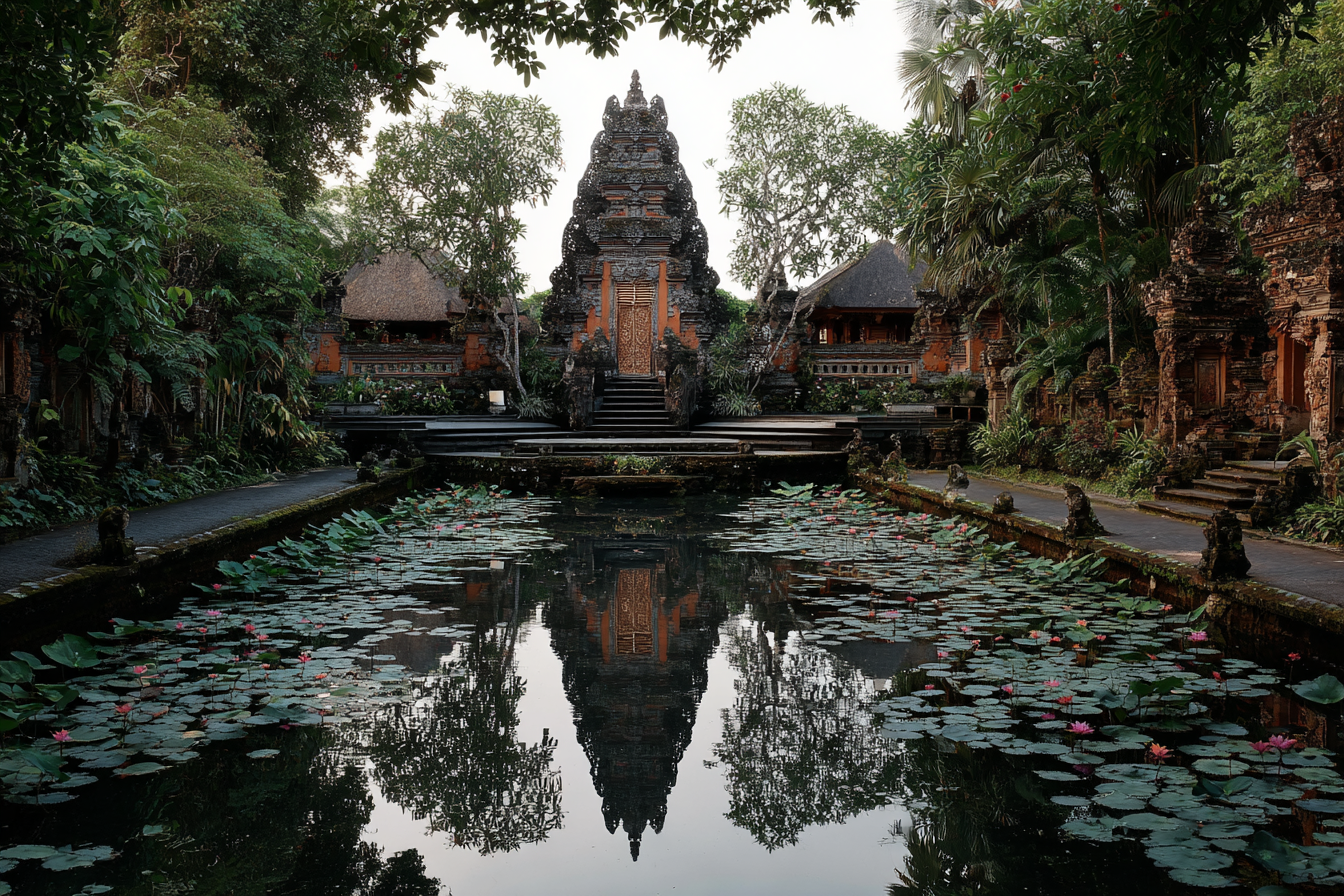Ubud, often regarded as the cultural heart of Bali, is renowned for its lush landscapes, vibrant art scene, and deeply spiritual atmosphere. At the core of this enchanting town are its temples, which are not just places of worship but also living embodiments of Balinese history and tradition. Embarking on Ubud temple tours offers travelers a unique gateway to experience the sacred heritage of Bali while immersing themselves in the island’s rich cultural tapestry.
Exploring Ubud’s Most Famous Temples
Ubud houses some of Bali’s most captivating temples, each with its own story and spiritual significance. These sacred sites are remarkable for their architecture, statues, intricate carvings, and the serene ambiance that envelops them. Among the most visited temples in and around Ubud are the Pura Taman Saraswati, Ubud Palace Temple, Gunung Kawi, and Tirta Empul. Each of these temples provides not only a glimpse into Balinese Hinduism but also an opportunity to witness traditional rituals performed by locals with reverence and devotion.
Guided Temple Tours vs. Self-Guided Exploration
When it comes to exploring Ubud’s temples, travelers can choose between guided tours or self-exploration. Both options have their perks, but understanding their differences can help you decide how to get the most from your visit.
- Guided Tours: These tours often come with knowledgeable guides who share fascinating insights into the history, symbolism, and practices associated with each temple. Guides can also help navigate the cultural nuances, explain local customs, and answer questions you might have. This option is ideal for first-time visitors or those deeply interested in Balinese spirituality.
- Self-Tours: Exploring the temples on your own can be a peaceful and flexible experience, allowing you to move at your own pace and linger in places that captivate you most. However, this requires some prior research to fully appreciate the significance of each site and to adhere respectfully to local customs.
Discovering Pura Taman Saraswati and Ubud Palace Temple
Among Ubud’s iconic landmarks, Pura Taman Saraswati stands out for its elegant lotus pond and stunning architecture dedicated to Saraswati, the goddess of knowledge and arts. This temple is beautifully adorned with intricate stone carvings and hosts traditional dance performances in the evenings, making it a perfect starting point for your cultural and spiritual journey.
Just across from Taman Saraswati lies the Ubud Palace Temple, known locally as Puri Saren Agung. This historical royal residence includes beautiful temple shrines that reflect a blend of Hindu-Balinese architecture with intricate stonework and wood carvings. Visiting this palace temple provides a peek into Ubud’s regal past and the ongoing importance of temple ceremonies in everyday Balinese life.
Exploring Gunung Kawi and Tirta Empul
For those willing to venture just beyond Ubud, Gunung Kawi and Tirta Empul are two must-visit temple complexes nestled in scenic natural settings.
Gunung Kawi is an ancient temple dating back to the 11th century, famous for its unique rock-cut shrines carved into cliffs overlooking the lush river valley. The journey down to the temple involves descending stone steps, surrounded by verdant rice terraces, where the air is filled with tranquility and history.
Tirta Empul, renowned for its holy spring water, is a significant purification temple where Balinese Hindus partake in ritual baths meant to cleanse the body and soul. Visitors can respectfully observe or participate in the ritual, guided by the temple priests. Its spiritual ambiance and sacred waters make it one of Bali’s most revered temples.
The Cultural Significance and Customary Practices
Temples in Bali hold immense cultural meaning beyond their religious purposes. They act as centers for community gatherings, festivals, and artistic expressions. When visiting, understanding the cultural context enhances your experience and fosters respect for Balinese traditions.
Many temples remain actively used for ceremonies, which might include chanting, offerings of flowers and food, gamelan music, and traditional dances. Witnessing or taking part in these customs offers profound insight into the Balinese philosophy of life, which emphasizes harmony among people, nature, and the spiritual world.
Dress Codes and Proper Temple Etiquette
Respecting temple protocols is essential when visiting any sacred site in Bali. The dress code generally requires wearing a sarong and sash around the waist, modest clothing covering shoulders and knees, and avoiding black or dark-colored outfits that may be considered inappropriate.
Visitors should approach the temples calmly and quietly, avoiding disruptive behavior. Footwear is politely removed before entering some temple areas, and using flash photography during ceremonies or of priests may be discouraged. Always look for signs or ask guides about specific rules to ensure respectful conduct.
The Best Times to Visit to Avoid Crowds
Ubud’s temples can get crowded during weekends, public holidays, and major festivals like Galungan and Nyepi. To enjoy a more peaceful experience, consider visiting early in the morning when the temples open or late afternoons before closing. Weekdays, especially outside the peak tourist months (July and August), are generally quieter.
If you want to witness ceremonies, timing your visit during important religious festivals is ideal, but be prepared for larger crowds and heightened activity during those times.
Combining Temple Visits with Cultural Performances
One of the joys of Ubud temple tours is experiencing the island’s vibrant performing arts scene. Many temples, including Pura Taman Saraswati and Ubud Palace, host traditional Balinese dance performances in the evenings. These performances often narrate Hindu epics through expressive dance, gamelan music, and colorful costumes.
Combining temple visits by day with cultural shows in the evening enriches your understanding of Balinese spiritual stories and artistry. Booking combined tours can be convenient, ensuring transportation and seamless scheduling for a full-day cultural immersion.
Deepening Your Experience of Bali through Temple Tours
Exploring Ubud’s temples is more than sightseeing—it is an invitation to connect deeply with Balinese culture, spirituality, and history. Whether through the serene atmosphere of Pura Taman Saraswati, the ancient mysteries of Gunung Kawi, or the cleansing waters of Tirta Empul, these temple tours open a window into an ancient world still vibrant today.
Respectful engagement with temple customs, thoughtful timing of your visits, and the choice of guided experiences can transform your journey into a memorable pilgrimage of discovery. By venturing beyond the usual tourist attractions, Ubud temple tours offer a truly enriching way to explore the soul of Bali.







